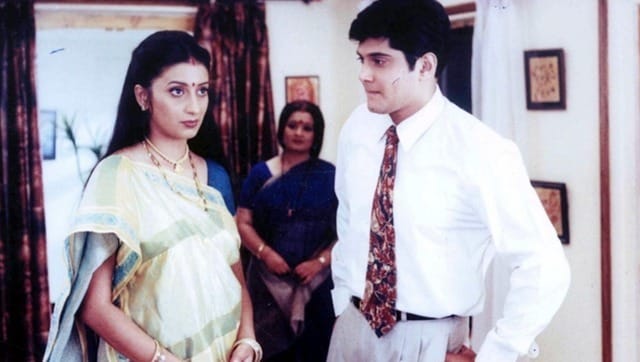Kyunki Saas Bhi Kabhi Bahu Thi turned 20 on 3 July. In this excerpt from The Making of Star India: The Amazing Story of Rupert Murdoch’s India Adventure, republished with permission from Penguin Random House India, author Vanita Kohli-Khandekar examines the show’s impact on Indian television. *** Ekta Kapoor made her first show for DD in the 1990s, when she was a teenager. Padosan was followed by Mano Ya Na Mano on Zee TV in 1995. Success came with Hum Paanch, a sitcom about a man with five daughters, which became a hit on Zee TV. Balaji Telefilms, the firm she set up with her mother Shobha Kapoor in 1994, was off to a good start. Television was expanding and there was a demand for show ideas and producers. As the daughter of Jeetendra, a top film star of the 1960s, Kapoor belonged to the world of content and loved it. She was making shows for channels across the country. Koshish: Ek Aasha, the struggle of the wife of a mentally challenged man, and Ghar Ek Mandir, a show she did in Tamil and then in Hindi, were all hugely successful. ‘But I wanted to do a daily prime-time soap opera and wasn’t getting the chance,’ remembers Kapoor, now in her early forties. Dailies were usually telecast in the afternoon and were meant for female audiences. The prime-time audience was the entire family; it still is. Somewhere in February or March of 2000 she met Nair and pitched the idea of a daily prime-time soap, Kyunki Saas Bhi Kabhi Bahu Thi. The idea: examine what happens when a daughter-in-law becomes a mother-in-law. When the tapes of the first four episodes landed in the Star office in June, ‘I told my programming team, “Don’t react to this, we are too intellectual”,’ laughs [Sameer] Nair.
Kyunki was bright, garish and over the top going by the standards of the shows airing those days.
‘Till 1998–99 Hindi television was still niche, SEC A [socioeconomic classification A or upper class] with shows like Saans, Kora Kagaz. It was about rich families, divorce. We had commissioned some shows like Rajdhani, a political thriller with Bobby Bedi, but not mass TV,’ says Tarun Katial, who was then part of the programming team at Star. He went on to become the CEO of Reliance Broadcast Network and later of Zee5, Zee’s online video brand. Till then Hindi shows had a very upper-middle-class feel. The big hits were Tara, about a single woman’s struggles; Saans, about a broken marriage; and Banegi Apni Baat, a story of three sisters who are as different as can be, and the paths their lives take. These shows had realistic stories about people who were well educated and sought a solution through hard work and intelligence. This appealed to the audience till the late 1990s. This is because the homes cable TV reached were in buildings in Mumbai, Chennai and Bangalore and in upper-income housing colonies in Delhi, Pune and other cities. [caption id=“attachment_8569381” align=“alignnone” width=“640”]
 Still from Kyunki Saas Bhi Kabhi Bahu Thi[/caption]
It was this market that Tulsi Virani walked into at 10.30 pm on the same night that [Amitabh] Bachchan did in July [with Kaun Banega Crorepati].
The daughter-in-law of a typical Gujarati family, she lived with all its members under the same roof. Kyunki captured the politics of an Indian family with all its relatives, cousins, uncles and aunts thrown in. The women stood up for issues, they manipulated the men and used their seniority and relationships to get what they wanted. And they did all this while being impeccably dressed, be it in the kitchen or in bed. Kyunki was kitchen politics, family machinations and a fashion show all rolled in one. Think of Dynasty or Dallas, Indianise them with a large joint family, take out all the sex, add lots of colourful clothes and jewellery and you had Kyunki. I started watching it sometime in September 2000 and continued to follow it for five years, maybe more, as did large parts of Hindi-speaking India. Kyunki touched something very deep, very basic in us — our insecurities as women in an Indian family and how these play out. In a few months it had overtaken KBC in ratings. In October 2000, Kahaani Ghar Ghar Kii, another daily soap opera from the Balaji stable, this one about a north Indian joint family, went on-air at 10 pm. It too became a hit. Star quickly developed a vice-like grip on Indian audiences from 9 pm to 11 pm. Kapoor, now crowned the drama queen of India, continued to create a string of shows that featured strong female protagonists, up to shenanigans of one kind or the other. Invariably these shows started with the letter ‘K’, since she had become superstitious about the success of Kyunki and Kahaani. Soon Kasautii Zindagii Kay, Ssshhhh . . . Koi Hai among many others followed.


)
)
)
)
)
)
)
)
)



